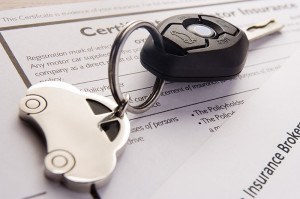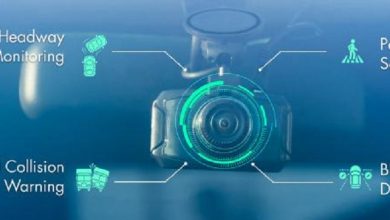Linden Holliday, CEO of MyDrive explores the potential of telematics in insurance sector
Introduction to Telematics – Changing the Measurement of Risk
For decades, insurance companies have managed their driver insurance book using a “pooled risk” model. Insurers assessed driver risk using blunt proxies such as profession, gender, age, marital status and medical history. Groups of drivers who presented varying degrees of risk were bundled together to spread an insurer’s risk.

The reason for the use of these blunt proxies is simple – they have, until recently, been the only information readily available to insurance companies. This information is not behaviorally based – it is factual information about the client such as age, occupation, marital status etc. This information is capable of indicating risk by statistical analysis, and by drawing conclusions from assuming behavior based on like characteristics of a cohort, but these conclusions work only at large numbers – they are simply not capable of measuring individual risk. (For example, a 21 year old male driver who is an actor would be regarded as a high risk in most statistical models. This driver is not a high risk due any of these measures (age, gender and occupation), the risk presented is entirely dependent upon his actual behavior behind the wheel.
It is of course true that a large cohort of similar drivers will be a higher risk than average, but within the cohort there will be a range of good (low risk) and bad (high risk) drivers. Pricing to the average is blunt at best, and provides a very sub-optimal customer experience (It would be unacceptable to be charged for a large steak when you have eaten a salad “because most people of your age and gender tend to eat steak, so we charge everyone the same”. This is exactly what the old model has done for years.
The benefits of telematics
In recent years the rapid evolution of mobile communications, vehicle monitoring systems and location technology has resulted in Usage Based Insurance (UBI) becoming mainstream in many markets in North America and Europe.
There are 3 main benefits from an insurer’s perspective:
- Excellent risk selection: Motor insurers now have the opportunity to fundamentally improve their risk ratios by understanding what “good” and “bad” driving is and pricing individual risk accordingly. Insurers are also presented with the opportunity to reduce their risk by incentivizing and recruiting low-risk drivers, whilst deselecting high-risk drivers.
- Early adoption advantages: Insurance companies that introduce effective UBI programs before their competitors will be able to attract and retain skilled, safer drivers and build significant competitive advantage whilst their rivals fall further behind. This is particularly true of the early adopters as there is a high degree of self-selection – i.e. only the best drivers tend to buy UBI policies
- Customer engagement: The personal engagement afforded to the insurer by telematics has a tremendously important side effect of giving them the opportunity to increasing the frequency and quality of their contacts with customers.
For the “good” driver, the first and obvious benefit of telematics is that they can expect to see their premiums reduced and to be able to monitor and improve their own driving. This makes them safer on the road, reducing the risk of a driving incident, benefiting the entire insurance industry. Content strategies based around educating customers on how to become better drivers are popular.
What is the technology behind telematics?
Whilst the methods of driver data collection vary, (smartphone apps, professionally installed on board units (OBUs); plug-in devices (OBD-II) and car manufacturer installed device), the critical success factor of any effective driver telematics system is the profiling capability sitting at the heart of the proposition.
The average driver in the UK spends about 25 hours driving per month, (or 300 hours per year). The best driver profilers analyze GPS data collected on a second by second basis and delivers over 1million data measurements for the average UK driver per year. The most accurate profilers contextualize the data against national road maps to provide clients with the most detailed and clear profile of individual driver performance, whilst understanding how they react to all changes in road topography.
Telematics – platform selection
The benefits delivered by driver profiling are clear both for driver and insurer but any insurer wishing to launch a telematics offering should be aware of and avoid a number of pitfalls that could result in costly back tracking, poor customer experience and bad pricing decisions.
 Many telematics service providers describe their solution as “insurance telematics capable”, in reality the most effective solutions are built with a specific set of capabilities that are beyond the telematics solutions that have evolved from older more limited systems. Systems that have grown out of fleet businesses are often based around analyzing the vehicle rather than the driver.
Many telematics service providers describe their solution as “insurance telematics capable”, in reality the most effective solutions are built with a specific set of capabilities that are beyond the telematics solutions that have evolved from older more limited systems. Systems that have grown out of fleet businesses are often based around analyzing the vehicle rather than the driver.
Only platforms that provide geospatial awareness can provide the context required to get the full detail of a driver’s behavior. Essentially, it is not enough to know what a driver does, to understand the appropriateness of what is happening we need to know where this is happening as well.
Insurance Product Managers are encouraged to first consider the most suitable data collection device for their market and data requirements, insist on a solution that offers 1 second GPS data, (this is essential in building an accurate driver profile), then consider the scalability, data granularity and pricing of the solution. The key questions to ask a telematics provider are: –
- How will I know the data is accurate?
- How will the data be analyzed?
- How will you collect my data?
- How detailed and granular is the driver data you present?
- How will you install the offering?
- How will you present my data?
- How will you aggregate the “big data”?
- How can you tailor your offering to meet our specific needs?
In conclusion, data is key to success. Data can never be reconstituted where it does not exist. The market will evolve hugely, and it will in future be possible to undertake data analysis which we cannot describe today. As these abilities improve, the most successful insurers will have a rich data stream to mine, to increase insight, improve profitability and even identify cross sell opportunities.
About the author
Linden joined MyDrive in 2012, having spent the previous 8 years as a Management Consultant within the “Big 5”. Linden has held senior operational roles, at Director level, in several FTSE 100 companies. He is a recognized authority on the design and implementation of Business Operating Models. His experience also covers business transformation, program management, new business set-up, cost reduction and organization design.



